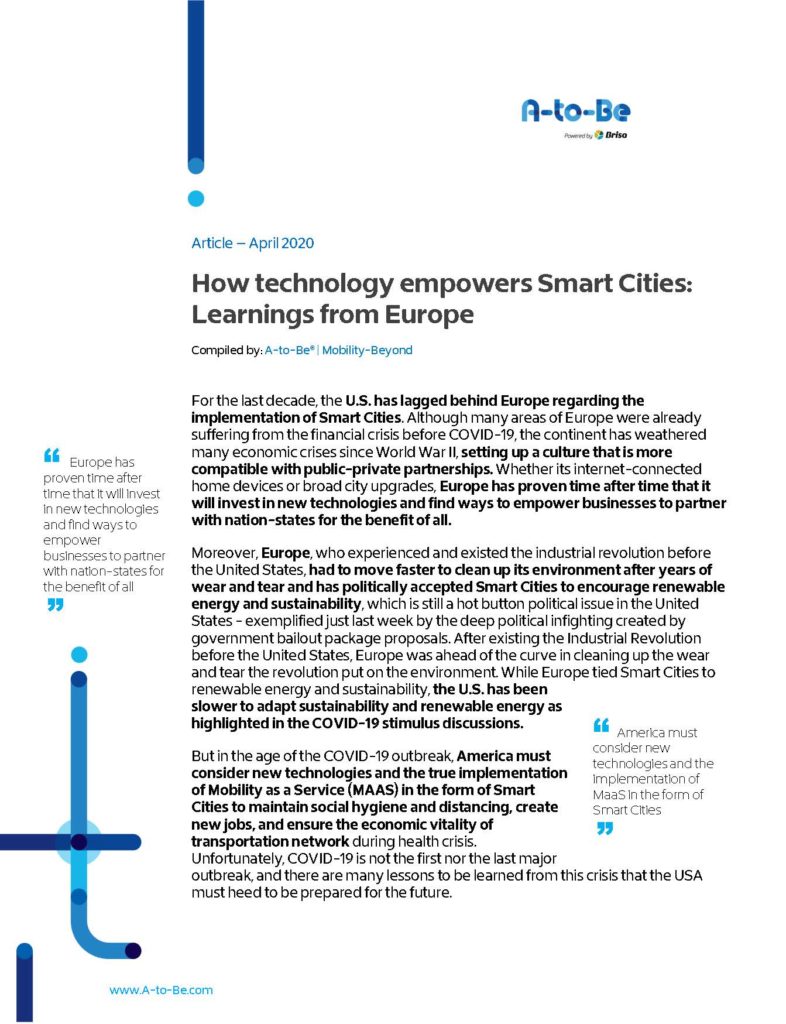A truly smart city improves the quality of life for citizens and visitors. By the year 2050, over 60 percent of the global population is expected to live in cities. Smart Cities are the future of urban development; however, the U.S. has trailed behind Europe regarding the implementation of Smart Cities over the last decade. Europe has invested over $18 billion in Smart Cities since 2014.
The COVID-19 outbreak has shed even more light on the reasons why the U.S. needs to invest in Smart Cities. America has been slower to adapt sustainability and renewable energy as highlighted in the COVID-19 stimulus discussions. Unlike the U.S., Europe has repeatedly proven that it will invest in new technologies and find ways to empower businesses to partner with nation-states for the benefit of all. ATPMs are just one example of a product that has become regular in Europe but is still waiting for full acceptance in the United States.
America has been slow to adapt to Smart Reasons because many cities began pilot programs without accurate planning or ongoing phases that would ensure permanent developments. Additionally, an increasing number of Americans are becoming “house poor” in urban areas, and are unable to focus on implementing smart city discussions and further investments. U.S. cities are also locked into data silos, and there is a huge shortage of quality workers at the city level related to data science and back-end technology skills.
In the age of the COVID-19 outbreak, the U.S. must consider new technologies and the true implementation of Mobility as a Service (MAAS) in the form of Smart Cities to maintain social hygiene and distancing, create new jobs, and ensure economic vitality.
Smart Cities connect every layer of a city, so that data is derived from everything that is connected. This data is used to improve the lives of citizens and improve communication between citizens and the government.
Making payment methods simple, reducing the need for cash and multiple credit cards, and allowing customers to move throughout their day without interacting with others that could be spreading sicknesses are all benefits of Smart Cities that America needs.
Learn more by reading the white paper “How technology empowers Smart Cities: Learnings from Europe,” compiled by A-to-Be and Mobility-Beyond.



